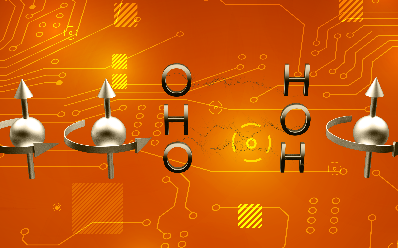Institut Charles Sadron News

Publié le 20/01/2025 par Vargas Jentzsch Andreas
In the field of Quantum Information Technologies (QIT), organic materials remain rare. One promising family of materials is photo-excited chromophore-radical systems, which, due to their properties, can be seen as surrogates for NV– centers. In a recent breakthrough, a collaboration between researchers at the University of Freiburg and the ICS has demonstrated that spin systems can efficiently communicate through hydrogen-bond bridges — a world first in the field. These results pave the way for the development of molecular qubits based on non-covalent interactions, accelerating the development of these critical materials for the future. This work has been published in Nature Chemistry.
Khariushin, I. V.; Thielert, P.; Zöllner, E.; Mayländer, M.; Quintes, T.; Richert, S.*; Vargas Jentzsch, A.* Supramolecular dyads as photogenerated qubit candidates. Nat. Chem. 2025, 17, 493–499.
https://doi.org/10.1038/s41557-024-01716-5